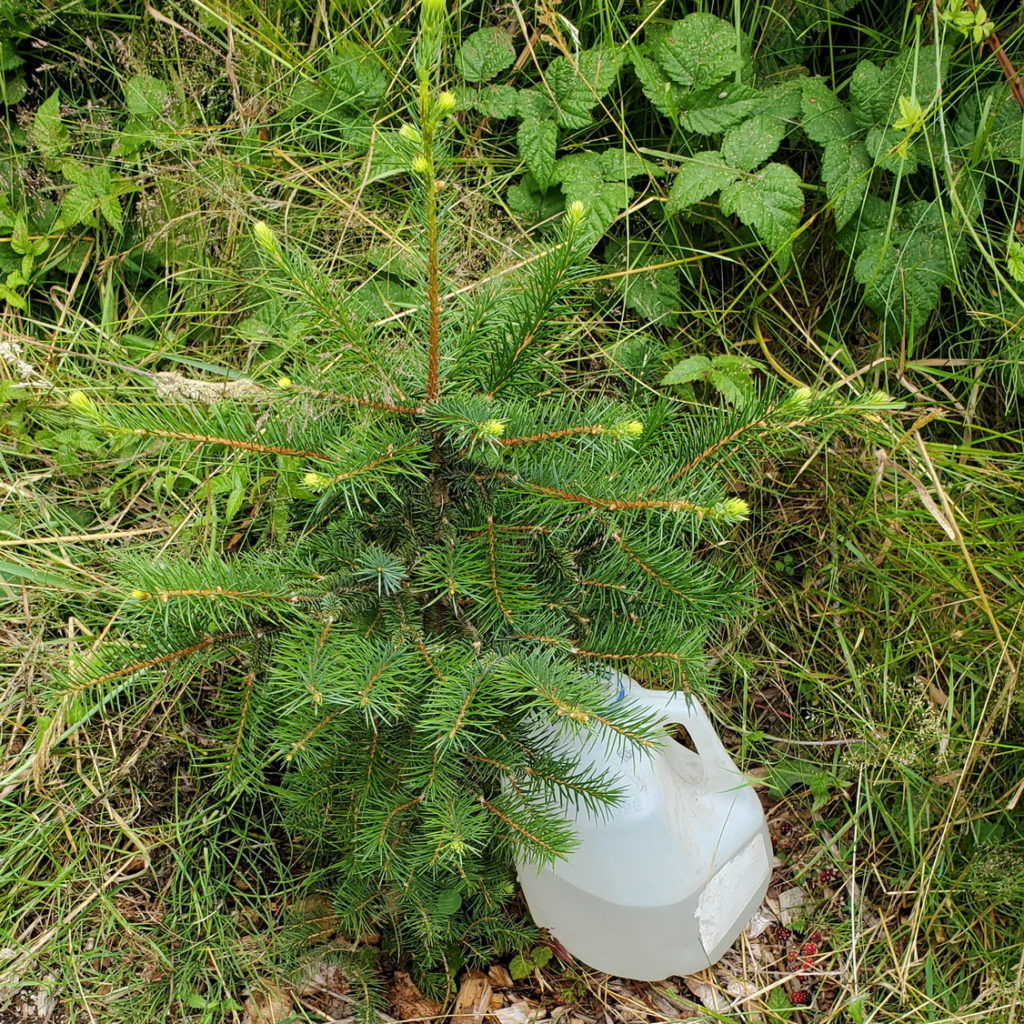Scattered showers in August don’t spell the end of the dry season. If this year turns out to be typical, it will be well into October before enough rain has fallen to saturate the soil and make it easier to remove invasive plants (without leaving their roots in the ground). Still, there is work to be done.
Water Recent Plantings
The survival rates for fall and winter plantings will be improved by watering the plants through their first few dry seasons. I have been trying to water every three weeks for the first three years for new plants. That’s easy if I can reach them with a garden hose. If I have to carry water in jugs, I’ve been trying to give the trees at least two gallons of water each time and the shrubs and ferns at least one.

Maintain Bradley Lines
I think a better term for “weed break” is “Bradley line” to recognize the sisters who popularized this restoration strategy. The dry season is a good time to maintain Bradley lines around infestations of invasives like Hedge Bindweed, Vinca, Creeping Thistle, and in some cases Himalayan Blackberry.
Maintain Compost Heaps
The dry season is a good time to stir your compost heaps and uproot any weeds growing on/in them. This can be done manually, but a strong pitchfork can help. I like to shake up the whole pile if possible, settling the soil to the bottom and bringing the smaller sticks and branches to the top where I can stomp on them and break them up.
Make Ring Cuts on Ivy Growing Up Trees
Any time of the year is the right time to make ring cuts on Ivy growing up trees. This is the first step, and single most important task, in forest restoration. Completing the survival rings can wait until the wet season when the ground is saturated, and the roots will be easier to get out.
Work in the Wet Areas
In the dry season some of the low-lying boggy areas can dry out enough to work in. This can include building and maintaining trails that cross muddy spots. I like to construct informal “crossings” using natural, on-site materials like rocks for stepping stones or sawn limbs for “corduroy” sections of trail.
Since the soil in some low-lying sites stays moist throughout the dry season, it can be a good time to remove wet-loving invasives like Spotted Jewelweed and Creeping Buttercup. Boggy areas can also contain Himalayan Blackberry, but I don’t like to work on it during warm weather when I can’t wear a protective jacket. I’ll take wet feet over bleeding arms any day.